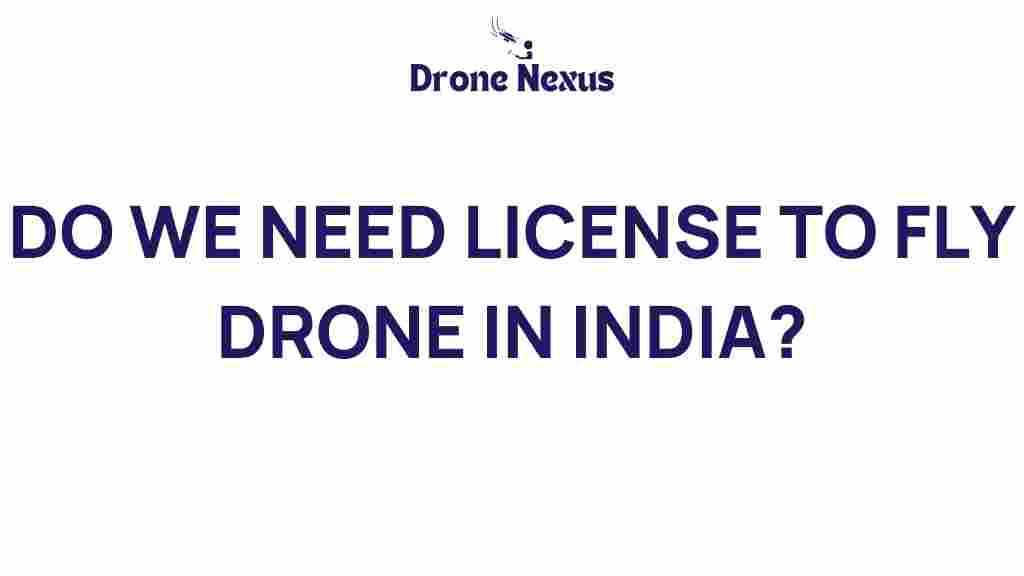Drone License India: Understanding the Requirements
As the popularity of drones continues to rise in India, many enthusiasts are eager to take to the skies. However, the question remains: do you need a license to fly a drone in India? Understanding the regulations surrounding drone usage is crucial for both recreational and commercial operators. This article will guide you through the necessary steps to obtain a drone license in India, the regulations you need to follow, and tips for troubleshooting common issues.
The Importance of a Drone License in India
Flying a drone without the appropriate permissions can lead to hefty fines and legal complications. The drone license India requirement was established to ensure safety and security in the airspace. The Directorate General of Civil Aviation (DGCA) oversees these regulations, which aim to protect people, property, and privacy.
Who Needs a Drone License in India?
In India, anyone wishing to operate a drone for commercial purposes must obtain a drone license. This includes:
- Commercial drone photographers
- Agricultural drone operators
- Drone delivery services
- Any entity using drones for business-related activities
For recreational users, a license is not mandatory, provided the drone weighs less than 250 grams. However, it is advisable to follow best practices and regulations to avoid any potential issues.
Step-by-Step Process to Obtain a Drone License in India
To navigate the process of acquiring a drone license in India, follow these detailed steps:
Step 1: Understanding the Types of Licenses
There are two primary types of drone licenses in India:
- Remote Pilot License (RPL): Required for individuals who wish to operate drones commercially.
- Unmanned Aircraft Operator Permit (UAOP): Required for companies that plan to operate drones for commercial purposes.
Step 2: Meeting Eligibility Criteria
Before applying, ensure that you meet the following eligibility criteria:
- You must be at least 18 years old.
- You should have completed 10th standard or equivalent education.
- You must possess a valid medical fitness certificate from a DGCA-approved medical examiner.
Step 3: Enroll in a DGCA-Approved Training Institute
To obtain a Remote Pilot License, you need to enroll in a DGCA-approved drone training program. These programs typically include both theoretical and practical training. Upon completion, you will receive a training certificate.
Step 4: Passing the Examination
After completing the training, you must pass the DGCA examination, which consists of:
- Theory tests covering aviation regulations, air navigation, meteorology, and drone operations.
- Practical tests to demonstrate your piloting skills.
Step 5: Applying for the Drone License
Once you have passed the examination, you can apply for the drone license. Here’s what you need to do:
- Gather required documents, including:
- Identity proof
- Address proof
- Medical fitness certificate
- Training completion certificate
- Examination passing certificate
- Submit your application through the DGCA’s online portal.
- Pay the requisite fees.
Step 6: Receiving Your License
Upon approval of your application, you will receive your drone license via email. This license will be valid for five years, after which you will need to renew it.
Common Troubleshooting Tips for Drone Pilots
Even after obtaining a drone license in India, pilots may encounter challenges while flying. Here are some common issues and troubleshooting tips:
Issue 1: Connectivity Problems
If you experience connectivity problems with your drone, consider the following:
- Check the battery level of both the drone and the remote controller.
- Ensure that there are no physical obstructions between the drone and the controller.
- Update the firmware of the drone and controller to the latest version.
Issue 2: GPS Signal Loss
GPS signal loss can lead to navigation issues. To mitigate this:
- Fly in open areas away from tall buildings and trees.
- Wait for the drone to acquire a strong GPS signal before takeoff.
- Consider using a drone with advanced GPS capabilities.
Issue 3: Camera Malfunctions
For those using their drones for photography, a malfunctioning camera can be frustrating. Here’s how to address camera issues:
- Ensure that the camera lens is clean and free from obstructions.
- Check the camera settings and ensure they are configured correctly.
- Restart the drone and the camera to reset any possible glitches.
Conclusion
Navigating the skies with a drone in India can be an exhilarating experience, but it comes with responsibilities. Obtaining a drone license in India is essential for ensuring safety and compliance with regulations. By following the outlined steps, you can successfully apply for your license and enjoy the benefits of flying your drone legally. Remember to stay updated with any changes in regulations and always fly responsibly.
For more information on drone regulations and updates, you can refer to the DGCA official website.
If you have further questions or need assistance, feel free to check out our detailed guides on drone operations here.
This article is in the category Safety and created by DroneNexus Team
